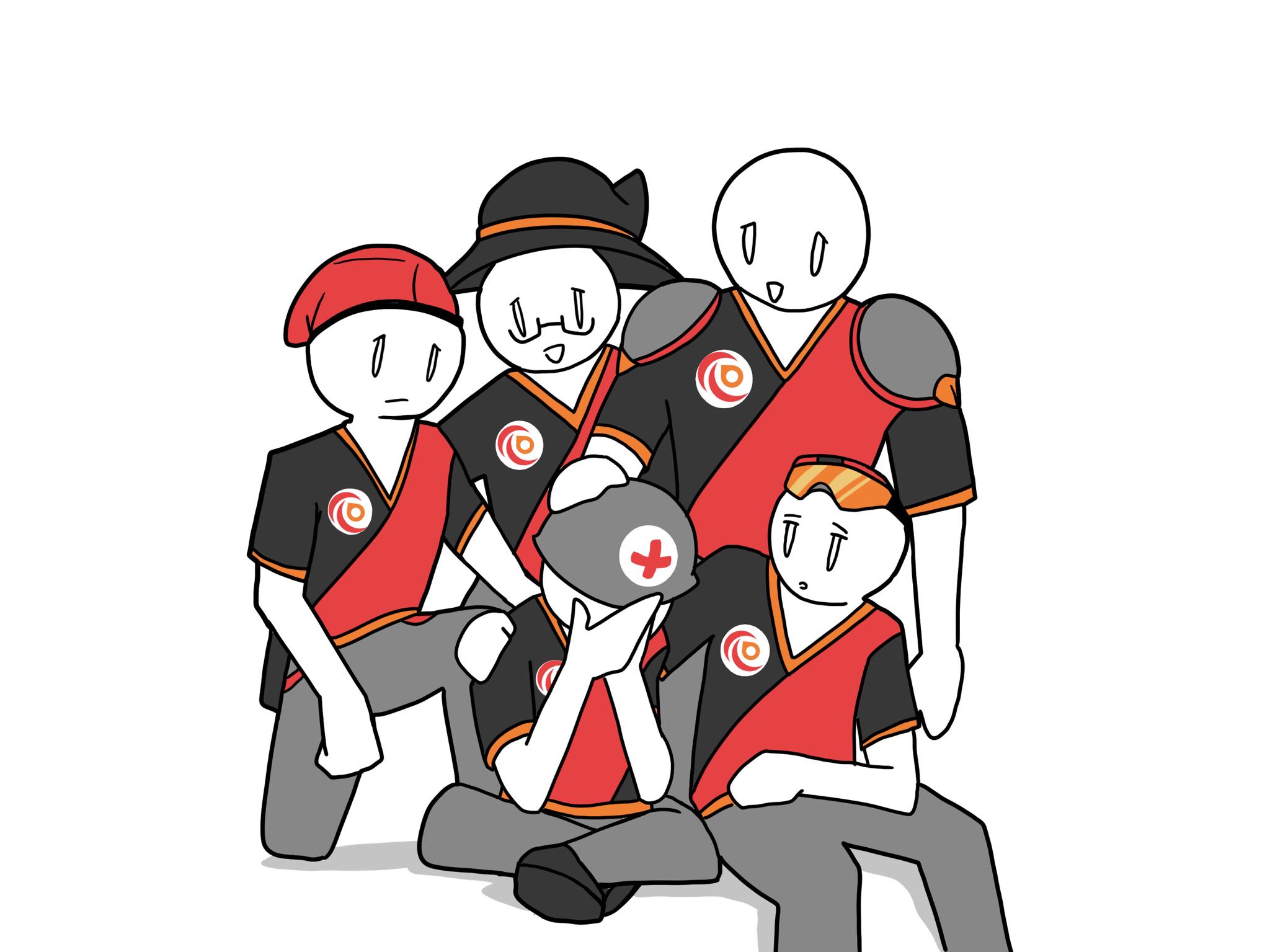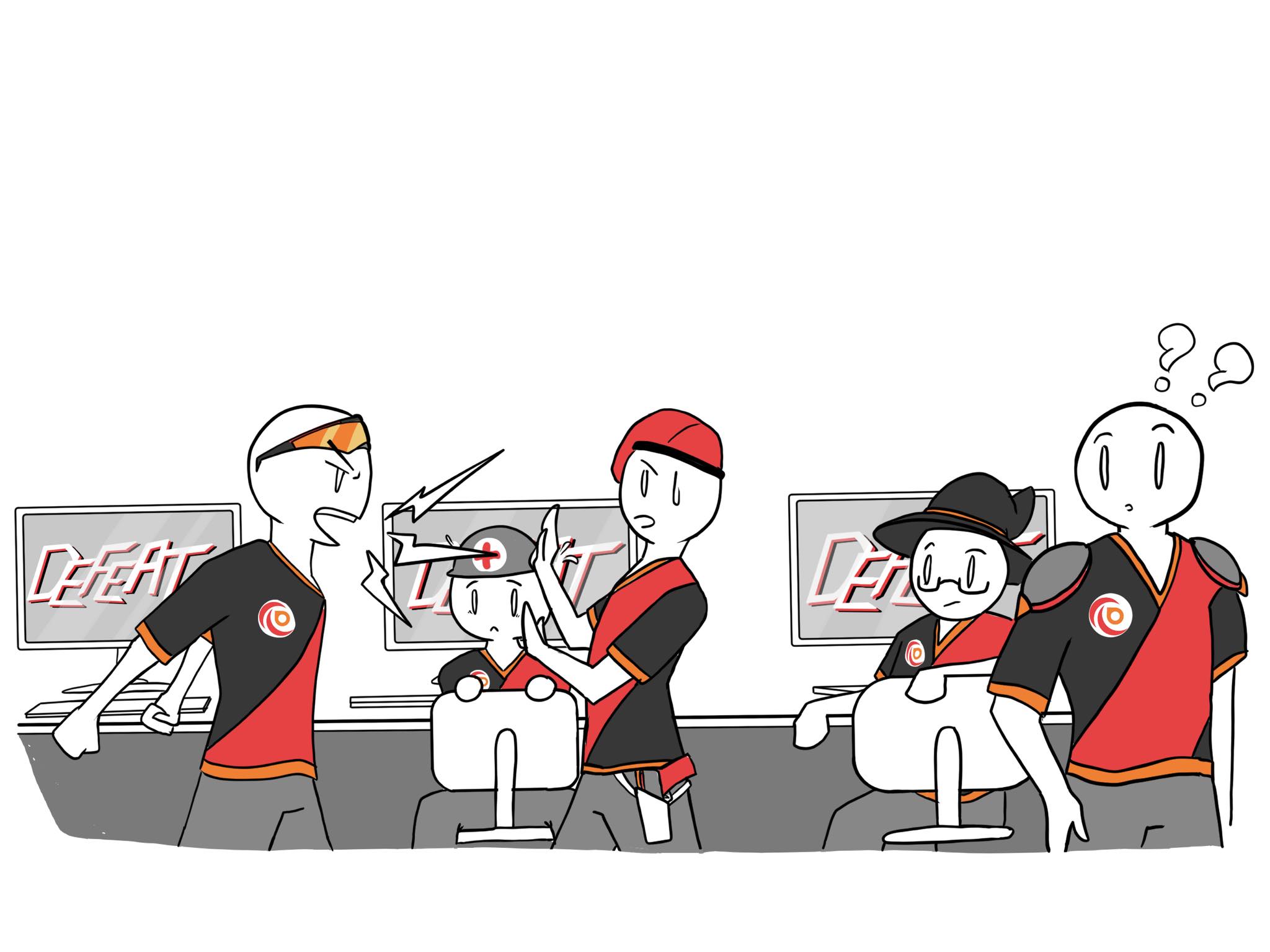Solving conflicts in an esport team – An important tool?
Are you looking for ways to become better at solving conflicts in an esport team? Are you sometimes in doubt, whether you are solving a conflict correct as an esport coach? Conflicts are a major part of work and life. But wouldn’t it be great with a world without conflicts? An organization without disagreements and everyone is satisfied? Surely, most of us feel that way. The truth is, though, that it is simply an unreasonable idea. However, we can become better at solving these conflicts. In this article, we are going to look at how players in esport can increase their skills in solving conflicts in an esport team. We cannot cover all theories regarding solving conflicts in this article. But we hope to give you an idea about how we, as individuals, solve conflicts differently and what essential factors help increase conflict resolution skills.
Solving conflicts is a popular topic – also in esport
In a study conducted by SundGaming, 31 esport coaches completed a semi-structured interview about working as an esport coach. One of the questions asked was “Do you experience frustration in training, and does it often occur in form of conflicts?”. 13 coaches responded that they felt frustrated sometimes in training, which would evolve into conflicts. 10 coaches responded that they felt frustrated over conflicts between other esport players in training.
Taking the above study into account, it is clear that conflicts occur in esport training and this is something that frustrates players and coaches. Therefore, you can say that esport players (and coaches) would like to become better at solving conflicts in an esport team. That would eventually lead to less frustration in training, which leads to better team performance. And it’s always about the team!
Different ways of solving conflicts – The Thomas-Kilmann model
Different people use different methods to resolve conflicts. The Thomas-Kilmann model divides these methods into five categories. Each category presents an approach to resolving a conflict.
These are:
- Avoiding: Ignoring the conflict, hoping it will resolve itself or dissipate.
- Accommodating: Involves taking steps to satisfy the other party’s concerns or demands at the expense of your own needs or desires.
- Compromising: Involves finding an acceptable resolution that will partly, but not entirely, satisfy the concerns of all parties involved.
- Competing: Trying to satisfy your own desires at the expense of the other parties involved.
- Collaborating: Involves finding a solution that entirely satisfies the concerns of all involved parties.
Most of us can, without any doubt, relate to at least one of the above methods. And we may even prefer some of the methods over the others. All of these strategies can be used effectively in certain situations. But how do we become better at choosing the right conflict resolution method for the specific situation? There are some skills that you can try to increase, in order to become better at choosing between the methods.
Improving your ability to resolve conflicts in esport training
In order to increase your skills in resolving conflicts in a training, there are several approaches to take into account. All these approaches help choosing the best method for resolving conflicts described earlier.
Some of those approaches are:
- Active listening – Involves making note of a phrasing, then responding with the same wording. This not only demonstrates that you are listening, but also helps clear up any confusion regarding your argument.
- Patience – People will often hold their stands (simply because we want to be right) until they are right or are proven wrong. It’s important to keep in mind, that the conflict may not be solved right away. No matter the conflict and how long it may take, it is important to listen to every participant and respect each argument.
- Calmness and positivity – Being positive can help keeping the progress moving forward. Also, no conflict will be solved by anger, tears and bad language. Keep a good tone, stay positive and respect other participants arguments. Do not point fingers or become impulsive. Keeping calm will affect the others and eventually leading the progress forward.
- All three approaches help you navigate between the methods for resolving conflicts. Active listening helps you understand the problem. Patience involves knowing that conflicts aren’t always solved in a matter of minutes and sometimes you need to switch between methods depending on the conflict. Calmness and positivity help you keeping the progress forward. That leads to better communication, which leads to understanding the problem. And that eventually helps you choosing a method to resolve the conflict. However, we need to keep in mind that all three approaches, in some way, are connected.

Conclusion
To sum it all up, conflicts are a major part of our everyday life. This is also the case when talking about esport. Esport players and coaches can all have different approaches to resolving conflicts and all approaches differ in effectiveness, depending on the situation. The approaches include Avoiding, Accommodating, Compromising, Competing and Collaborating. No matter which method is your favorite, you can increase your conflict resolution skills by practicing three out of many approaches, being active listening, patience and Calmness and Positivity. Increasing your conflict resolution skills makes you become better at solving conflicts in an esport team. And that leads to less frustration in training, which leads to better team performance.
Litterature
Mossanen, M., Johnston, S. S., Green, J., & Joyner, B. D. (2014). A practical approach to conflict management for program directors. Journal of graduate medical education, 6(2), 345–346. https://doi.org/10.4300/JGME-D-14-00175.1
Overton, A. R., & Lowry, A. C. (2013). Conflict management: difficult conversations with difficult people. Clinics in colon and rectal surgery, 26(4), 259–264. https://doi.org/10.1055/s-0033-1356728


